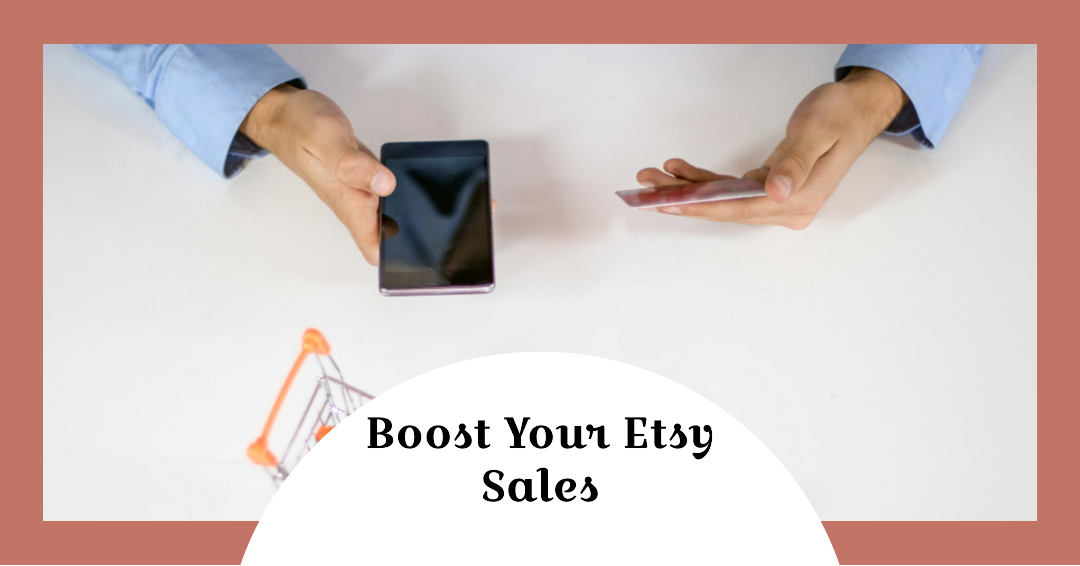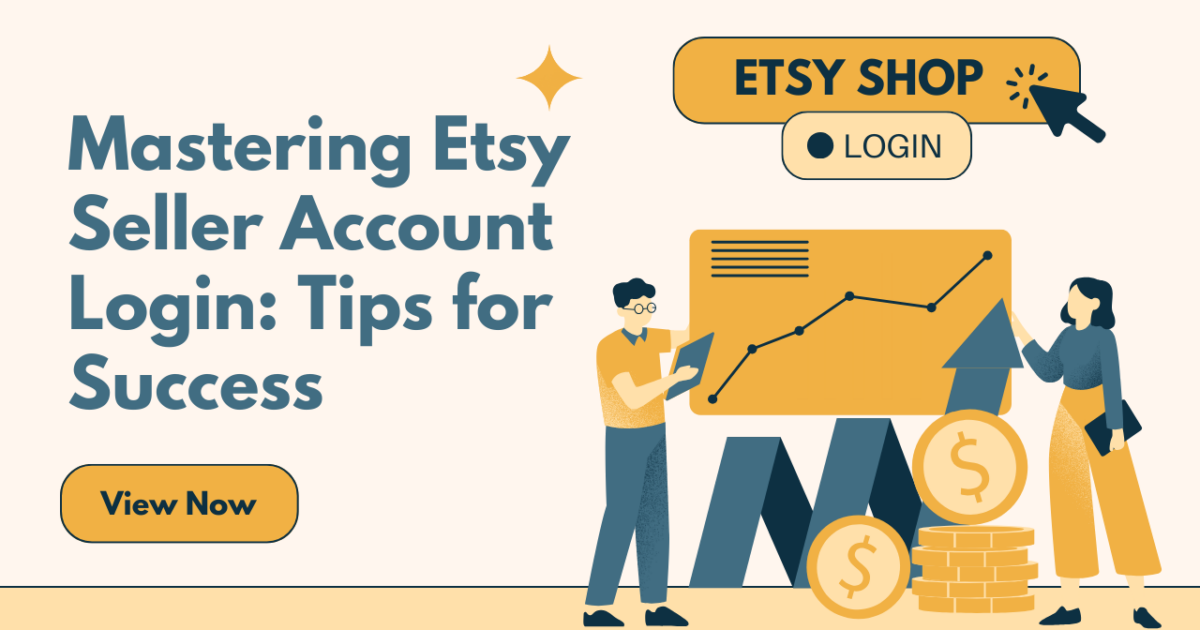How to Start and Grow Your Etsy Shop: A Complete Guide
Etsy is a popular online marketplace that connects millions of buyers and sellers of handmade, vintage, and craft supplies. If you have a passion for creating or curating unique products, you might want to consider selling on Etsy. However, starting and growing an Etsy shop is not as easy as it sounds. You need to do a lot of research, planning, and marketing to stand out from the crowd and attract loyal customers. In this blog post, we will show you how to start and grow your Etsy shop step by step, and introduce you to some of the best Etsy seller tools that can help you along the way.
Step 1: Set up your Etsy seller account
Before you can start selling on Etsy, you need to set up your Etsy seller account. This is a simple process that involves choosing a username, password, email address, and shop name. You also need to agree to Etsy’s terms of use and policies, and provide your billing information. You can use your credit card, PayPal, or Etsy Payments to pay your Etsy seller fees.
To set up your Etsy seller account, follow these steps:
- Go to [Etsy.com] and click on “Sell on Etsy” at the top right corner of the homepage.
- Click on “Open your Etsy shop”.
- Choose your preferred language, country, and currency.
- Enter your email address, username, and password, and click on “Register”.
- Choose a name for your shop and click on “Save and continue”.
- Add your billing information and click on “Save and continue”.
Congratulations, you have successfully created your Etsy seller account! You can now access your Etsy seller dashboard, where you can manage your shop, listings, orders, finances, marketing, and analytics. You can also download the Etsy seller app on your mobile device to manage your shop on the go.
Step 2: Create your shop branding and policies
Before you start listing your products, you need to create your shop branding and policies. This is an important step that will help you establish your identity, credibility, and professionalism as an Etsy seller. Your shop branding and policies include your shop logo, banner, icon, about section, announcement, message to buyers, and shop policies.
Your shop logo, banner, and icon are the visual elements that represent your shop and products. They should be clear, consistent, and appealing to your target audience. You can use tools like [Canva] or [PicMonkey] to create your own graphics, or hire a designer on [Fiverr] or [99designs] to do it for you.
Your about section, announcement, and message to buyers are the textual elements that tell your story, showcase your personality, and communicate your value proposition. They should be informative, engaging, and persuasive to your potential customers. You can use tools like [Grammarly] or [Hemingway] to check your spelling, grammar, and readability, or hire a copywriter on [Upwork] or [Contently] to do it for you.
Your shop policies are the rules and expectations that you set for your buyers and yourself. They include your payment methods, shipping options, processing times, return and exchange policies, and custom order policies. They should be clear, fair, and consistent with Etsy’s policies and best practices. You can use Etsy’s policy template to create your own policies, or customize them to suit your needs.
To create your shop branding and policies, follow these steps:
- Go to your Etsy seller dashboard and click on “Shop Manager” at the top right corner of the page.
- Click on “Settings” and then “Info & Appearance”.
- Upload your shop logo, banner, and icon, and fill in your shop title and announcement.
- Click on “Save”.
- Click on “Story” and fill in your about section and message to buyers.
- Click on “Save”.
- Click on “Policies” and fill in your shop policies.
- Click on “Save”.
You have now completed your shop branding and policies! You can preview your shop by clicking on “View shop” at the top left corner of the page.
Step 3: List your products and optimize your SEO
Now that you have created your shop branding and policies, you are ready to list your products and optimize your SEO. This is the most crucial step that will determine your visibility, traffic, and sales on Etsy. You need to create high-quality listings that showcase your products, highlight your benefits, and match your keywords.
Your listings consist of your product photos, title, description, price, category, attributes, tags, and variations. They should be accurate, detailed, and appealing to your buyers. You can use tools like [FotoFuze] or [Snapseed] to edit your photos, or hire a photographer on [Snappr] or [Shutterstock] to do it for you. You can use tools like [Marmalead] or [eRank] to research and optimize your keywords, or hire an SEO expert on [SEO Clerks] or [PeoplePerHour] to do it for you.
Your SEO (search engine optimization) is the process of improving your rankings and visibility on Etsy’s search engine and other search engines like Google and Bing. You need to use relevant and popular keywords in your listings, shop name, and shop sections, and follow Etsy’s SEO best practices. You can use tools like [Google Analytics] or [Bing Webmaster Tools] to track and analyze your traffic, or hire a web analyst on [Freelancer] or [Guru] to do it for you.
To list your products and optimize your SEO, follow these steps:
- Go to your Etsy seller dashboard and click on “Shop Manager” at the top right corner of the page.
- Click on “Listings” and then “Add a listing”.
- Upload your product photos and fill in your product title, description, price, category, attributes, tags, and variations.
- Click on “Publish”.
- Repeat the process for each product you want to list.
- Go to your Etsy seller dashboard and click on “Shop Manager” at the top right corner of the page.
- Click on “Settings” and then “Shop name”.
- Enter your shop name and click on “Save”.
- Click on “Sections” and create your shop sections using your keywords.
- Click on “Save”.
You have now listed your products and optimized your SEO! You can view your listings by clicking on “View shop” at the top left corner of the page.
Step 4: Promote your shop and products
After you have listed your products and optimized your SEO, you need to promote your shop and products. This is the final step that will help you increase your exposure, reach, and conversions on Etsy and beyond. You need to use various marketing channels and strategies to attract and retain your customers.
Some of the most effective marketing channels and strategies for Etsy sellers are:
- Etsy Ads: This is a paid advertising service that allows you to bid on keywords and display your listings on the top of Etsy’s search results and other pages. You can set your daily budget, target your audience, and track your performance. You can use tools like [Sellbrite] or [Vela] to manage your Etsy ads, or hire an ad manager on [Fiverr] or [Upwork] to do it for you.
- Social Media: This is a free or low-cost way to showcase your products, share your story, and engage with your followers. You can use platforms like [Facebook], [Instagram], [Pinterest], [Twitter], [YouTube], and [TikTok] to create and share your content. You can use tools like [Buffer] or [Hootsuite] to schedule and manage your social media posts, or hire a social media manager on [Fiverr] or [Upwork] to do it for you.
- Email Marketing: This is a powerful way to build your email list, send newsletters, and offer discounts and promotions. You can use platforms like [Mailchimp], [Constant Contact], [AWeber], and [ConvertKit] to create and send your email campaigns. You can use tools like [OptinMonster] or [Sumo] to collect email addresses from your website visitors, or hire an email marketer on [Fiverr] or [Upwork] to do it for you.
- Blogging: This is a great way to showcase your expertise, provide value, and drive traffic to your shop and products. You can use platforms like [WordPress], [Blogger], [Medium], and [Squarespace] to create and host your blog. You can use tools like [Yoast] or [SEMrush] to optimize your blog for SEO, or hire a blogger on [Fiverr] or [Upwork] to do it for you.
- Influencer Marketing: This is a trendy way to leverage the power and popularity of social media influencers to promote your shop and products. You can use platforms like [AspireIQ], [Influence.co], [FameBit], and [Upfluence] to find and connect with influencers in your niche. You can use tools like [BuzzSumo] or [Social Blade] to analyze and compare influencers, or hire an influencer marketer on [Fiverr] or [Upwork] to do it for you.
To promote your shop and products, follow these steps:
- Choose the marketing channels and strategies that suit your goals, budget, and audience.
- Create a marketing plan that outlines your objectives, tactics, and metrics.
- Execute your marketing plan and monitor your results.
- Adjust your marketing plan as needed and test new ideas.
You have now promoted your shop and products! You can expect to see an increase in your traffic, sales, and customer loyalty.
Conclusion
Starting and growing an Etsy shop is a rewarding and challenging journey that requires a lot of work, creativity, and patience. However, with the right tools, tips, and strategies, you can turn your passion into a profitable business. In this blog post, we have shown you how to start and grow your Etsy shop step by step, and introduced you to some of the best Etsy seller tools that can help you along the way. We hope you found this guide helpful and informative. If you have any questions or feedback, please feel free to leave a comment below. Happy selling!





